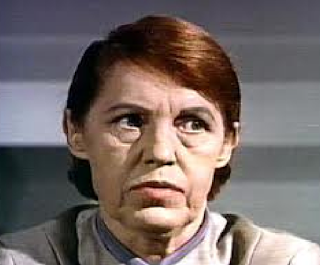It's March 1st, and there's been more than one trouble in River City, a/k/a the United States The Florida Parkland school shooting on 2/14/18 left 17 dead Back on 1/23/18, Benton Kentucky, a school shooting left 2 dead, 17 injured Back 11/7/17, Sutherland Springs, TX, a church shooting killed 26 people. So much safety So much safety…
Many people long for a return to the innocent heartland of America - family farms, playing children, hardworking parents, country cooking, and family values. And that's all true, along with feedlots (nothing like the smell of cow poop in the morning), lakes that are stinking green with phosphorus fertilizer runoff, and, sadly, home-grown terrorists:
The above five people were all arrested in Willmar, MN (pop. 19,610). Police search yielded methamphetamine, pills, cocaine, numerous firearms and ammunition. The firearms recovered included handguns, rifles, shotguns, and
submachine guns. They also found homemade silencers, night vision goggles, a rocket-propelled grenade launcher, and numerous items believed to be explosive. But wait, there's more! They also found books on incendiary devices and - my favorite item - a strap-on fake penis called a “Whizzinator,” sometimes used to evade drug tests. And yes, there was a concrete bunker and at least one minor child living in the home (
Twin Cities Pioneer Press)
My favorite local blogger, Cory Heidelberger, looked these up people on-line, and found that Thomas Quimby of Willmar likes to express his Alex Jones, anti-Muslim, White Pride beliefs while Chad Monson likes to post lots of cute Minions memes about killing people (
Dakota Free Press) And they weren't fooling: According to the criminal complaint, Monson had told someone that he had the addresses of a judge, a prosecutor and another attorney and intended to use explosives in or near their homes and vehicles.
Don't you feel safer knowing that this guy - THESE guys - had an arsenal?

Meanwhile, our Willmar group isn't the only crazy around Meet Artis Kattenberg of Brandon, SD She and her son went to a church in northwest Iowa, where fellow churchgoers got nervous when they realized that the son was wearing a bulletproof vest and carrying a gun into the sanctuary Eventually a Rock Valley, IA police officer called her to ask about it, and she told him that her son was an "Ethan Bot" (video game, Call of Duty Infinite Warfare), and that "he'd have to get a hold of the secretary of defense." There was also an intense encounter between the Kattenbergs and church elders, who asked them to no longer attend church A few weeks later, two of the church members were victims of drive-by shootings (No one was hurt.)
 |
Some of the stash.
Courtesy Minnehaha County Sheriff's Office |
At that point, the Iowa authorities contacted the Brandon Police, who paid a call on the Kattenbergs. They found a bunker, with 80 guns and thousands of rounds of ammunition. Some of the weapons were fully automatic. They also had tactile vests, and high end optics that included nightvision, infrared, thermal optics. Captain Jason Gearman of Minnehaha County said, "They've been purchasing $3,000- $7,000 worth of weapons pretty, pretty continuously for every three to five months."
Now, being the naive young thing I am, I would have thought - I would have hoped - that buying that many guns and ammo every 3-5 months would have registered, somewhere, that something might be wrong.. But no... (I'm going to get into the 1986 Firearm Owners Protection Act in a minute.) My husband just asked, "where did they get all this money?" and so far no one's answered THAT question, either
Anyway, all were purchased legally, locally, at Gary's Gun Shop and Scheels The employees remembered the Kattenbergs, because they talked about being spies, hating the government, having microchips in their brain, and, of course, the fact that the son was actually a warrior from a video game You know, the usual stuff BTW, the guns were in the 16 year old's name (
Argus Leader)
And, of course, the neighbors never saw anything "They were inside most of the time. The only time we ever saw them was their truck coming in and out of the driveway."
In case you're wondering, the charges against the Kattenbergs are: 2nd Degree Criminal Mischief/Aiding and Abetting, a Class “D” Felony: Reckless Use of a Firearm/Aiding and Abetting, an Aggravated Misdemeanor; and Contributing to the Delinquency of a Minor, a Misdemeanor. Her juvenile son is charged with: 2nd Degree Criminal Mischief; and Reckless Use of a Firearm (
Kiwaradio) That's it That's
all they are charged with
Don't you feel safer knowing these two had a bunker, loaded with guns and ammo?
How long, O Lord, how long?
Meanwhile, if you need an AR-15 to hunt with, I hate to think what you're hunting And other Armalite manufactures Did you know that the AR-15 and AR-18 were the favorite weapons of the IRA during the Irish Troubles? They even had their own song - "Little Armalite" Believe me, if the Irish can disarm, or "decomission" as they called it, which they did in 2005, anyone can do it, even the United States of America (See
"IRA Arms Decommissioned".)
 |
| Supreme Court Building |
Anyway, to all those who claim that AR-15s are their constitutional right - well,
they're wrong On November 27, 2017 SCOTUS refused to challenge Maryland's ban on assault weapons and assault-style weapons that included AR-15s, which means that SCOTUS agrees that none of these are covered by the 2nd Amendment (
Reuters) Nor does SCOTUS see open-carry as a 2nd Amendment right Not only that, but back when District of Columbia v. Heller gave individuals the constitutional right to own private handguns, Antonin Scalia, perhaps the least liberal justice to ever serve, said:
"Although we do not undertake an exhaustive historical analysis today of the full scope of the Second Amendment, nothing in our opinion should be taken to cast doubt on longstanding prohibitions on the possession of firearms by felons and the mentally ill, or laws forbidding the carrying of firearms in sensitive places such as schools and government buildings, or laws imposing conditions and qualifications on the commercial sale of arms...
We also recognize another important limitation on the right to keep and carry arms. Miller said, as we have explained, that the sorts of weapons protected were those “in common use at the time.” 307 U. S., at 179. We think that limitation is fairly supported by the historical tradition of prohibiting the carrying of “dangerous and unusual weapons...." (Heller)
Sorry, guys No, I'll take that back I'm not sorry at all I'm ecstatic that they're not a 2nd Amendment right I just wish they were also illegal They were, you know: The 1994 Violent Crime Control and Law Enforcement Act, banned the manufacture, use, possession and import of 19 types of assault weapons, including AK-47s and Uzis. It expired in 2004. The NRA has since successfully kept it from being re-enacted.
Can we talk about how the NRA is registered as a non-profit organization?
Can we talk about how Wayne LaPierre makes $5 million a year?
Can we talk about how much lobbying the NRA is doing, have done, and plans to do?
Can we talk about the way the NRA sends out letters to politicians and judges, asking them to provide - in writing - their stance on guns and the 2nd Amendment, saying, "If you choose not to return a position letter, you may be assigned a “?” rating, which can be interpreted by our membership as indifference, if not outright hostility, toward Second-Amendment related issues"? (
Snopes)
Can we talk about how this is extortion, at the very least, and should be 1000% illegal?
Meanwhile, let's talk about gun laws Some people will tell you that we have plenty of gun laws, they just need to be enforced Yes, we do and they do, but the laws have also been either gutted or "allowed to expire" (See the
1994 Violent Crime Control and Law Enforcement Act above).
(1) There are laws that stop convicted domestic abusers from getting guns are strictly enforced BUT - there are loopholes! Oh, let me count the loopholes.
First, stalkers, boyfriends get a pass (you have to have been "intimate" with the victim).
Second, there's no clause about taking the weapons they already have away from them, so if they're already armed, they stay armed.
Third, the law doesn't apply during the temporary restraining order period, which is when most women get killed by their abuser.
Fourth, there's the HUGE problem that military, police departments, and other groups somehow keep "slipping up" on registering people. The convicted domestic abuser who killed 26 people at a Texas church back in November 7, 2017 never had his name put into the national database that would have barred him from buying weapons The Air Force -
which had courtmartialed him for fracturing his baby stepson's skull - failed to enter it And, after the furor about that, the Air Force realized it "forgot" to enter almost 5,000 names of people convicted of domestic violence (
NBC News)
 |
Looking through microfilm at the
National Tracing Center - GQ |
(2) There's a national registry of guns, and that should always be checked! Oh, my dears, there isn't one
The 1986 Firearm Owners Protection Act bans states or federal agencies from building gun registries. That's right, the National Tracing Center is not allowed to have centralized computer data. What they have is on microfilm, without any index. Nada. (Seriously, read the GQ Article, "
Inside the Federal Bureau of Way Too Many Guns", and meet Charlie. "They can use pictures of paper, like microfilm (they recently got the go-ahead to convert the microfilm to PDFs), as long as the pictures of paper are not searchable. You have to flip through and read. No searching by gun owner. No searching by name." Pretty effing useless, isn't it?
(3) Enforce the law felons don't get guns. Except - and you knew there'd be an exception, didn't you?
Exception #1: The 1965 amendment to the federal Firearms Act of 1938 allows felons who want to own a gun the ability to apply for "relief from the disability of not being able to possess a gun." Unsurprisingly in many states (ahem, ahem) they get them!
Exception #2: White collar felons aren't included in the ban And, of course, if a felon get their felony expunged, pardoned, etc., they're good to go.
(4) Make sure the mentally ill don't get guns Besides the argument that it's toxic rage, not mental illness, that's behind mass shootings (and I believe this about 99.9%), in order to be banned from owning a weapon, you have to be
involuntarily committed - but if your stay doesn't exceed 72 hours (no matter how many times this happens), it doesn't count towards your ability to buy / own weapons So you could be involuntarily committed 20 times a year and, as long as you got out before 72 hours, you're good to go And Donald Trump himself signed an Executive Order repealing the (admittedly small) attempt Obama implemented to keep people who were getting mental illness disability from owning weapons.

(5) Background checks, background checks, background checks. We've all heard about the Brady Bill requiring background checks EXCEPT there's a couple of major flaws:
First Loophole: Immediately after it passed, the NRA launched lawsuits in nine states to declare the Brady Bill unconstitutional, and finally struck gold In 1997, in
Printz v. The United States, the Supreme Court ruled that the provision of the Brady Act that compelled state and local law enforcement officials to perform the background checks was unconstitutional, so it's on a voluntary basis
Second Loophole: Gun shows and other private sales -
including sales over the internet - are exempt from the Brady Bill requiring background checks and complete forms, sales records etc., since "any person may sell a firearm to an unlicensed resident of the state where they reside, as long as they do not know or have reasonable cause to believe the person is prohibited from receiving or possessing firearms" (
Wikipedia)
Third Loophole: Background checks only work one way Thanks - again - to the 1986 Firearm Owners Protection Act, a firearms dealer can get electronic information about the purchaser, but the FBI and the ATF
do not get electronic information in return to let them know what firearms are being purchased Or how many Or how often Which is why our local crazies Kattenbergs could purchase $3,000-$7,000 worth of firearms every three months and nobody got any red flags...
We have a lot of work to do to get sane gun laws back in this country.
And as for the idea of arming teachers.. Well, these memes say it better than I could:
   |
Make that THREE deputies who froze Which is the point, because you don't know who'll freeze until it happens.
And the 18% is true See HERE
And if they arm teachers, will they have to buy the guns the way they have to buy classroom supplies? |
Another major meme going around is that all would be well if we just restored prayer in schools Look, if prayer is going to do the trick, then how come that white supremacist punk shot up a black church AFTER sitting through their prayer meeting? Or the November 7, 2017 shooting by the convicted domestic abuser in a Texas church which killed 26 people? And don't forget the 2006 shooting in an Amish school which killed 5 Amish girls All of these were places of prayer.
I believe in prayer I do a lot of it But I also believe that we need ungutted regulations and laws, because the dark never stops rising, and we have to fight it all the time.
Anyway, that's the latest from South Dakota, where I WISH we were the only ones who talk like Mayberry, and act like Goodfellas while the crazy just keeps on coming.










































